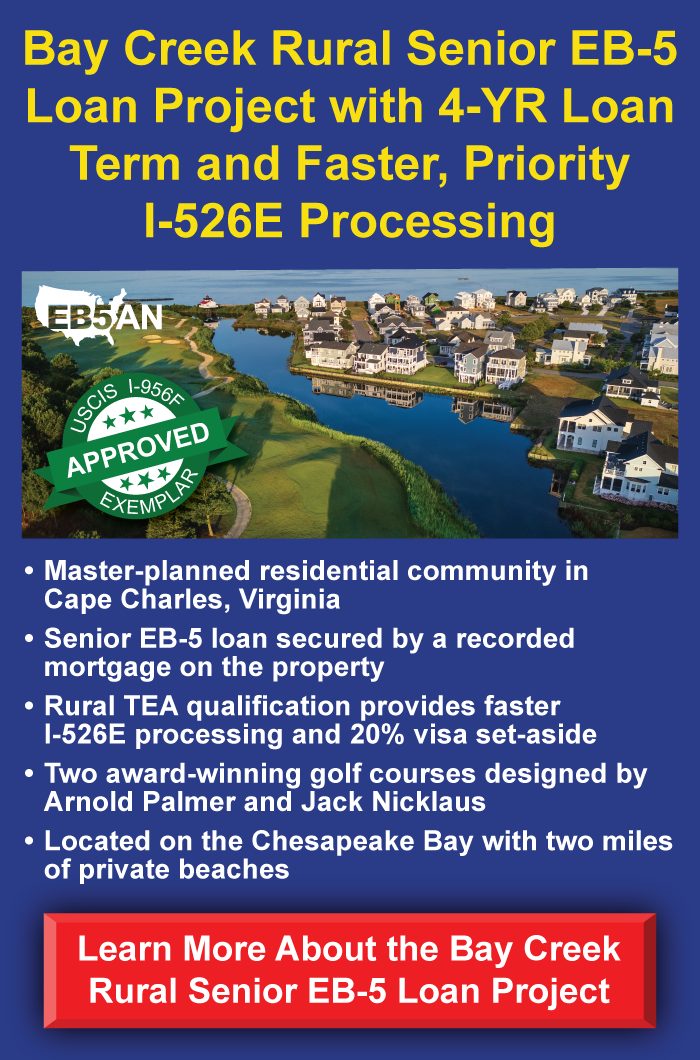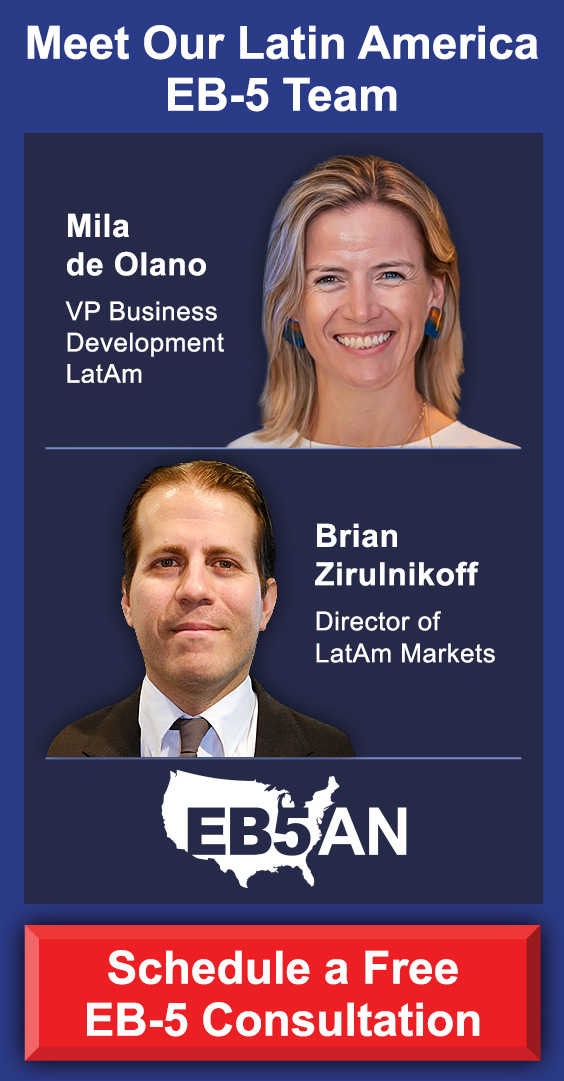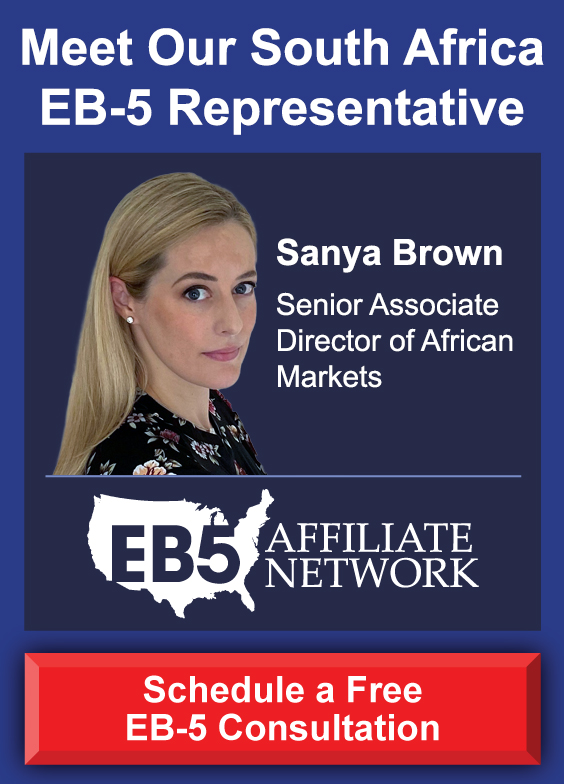Upon receiving I-526E approval and successfully adjusting their status or receiving consular approval, EB-5 investors receive a conditional Green Card that is valid for two years. At the end of these two years, investors use an I-829 petition to remove the conditions on their Green Cards.
The approval of this petition grants an EB-5 investor legal permanent resident status, marking the end of the EB-5 process.
Importantly, though, approval of this petition does not depend only on waiting for two years while on a conditional Green Card. United States Citizenship and Immigration Services (USCIS) can reject an I-829 petition if an investor fails to meet any of the conditions for an EB-5 Green Card.
In this article, we’ll discuss the importance of Form I-829, the possible causes of an I-829 denial, and what you can do if USCIS denies your I-829 petition.
What Is Form I-829?
How Does the I-829 Petition Work?
What Happens When USCIS Denies an I-829 Petition?
Possible Causes of I-829 Denial
- EB-5 Project Failure
- Inadequate Documentation
- Failure to Meet the Job Creation Requirement
- Failure to Sustain the Investment
- Violation of EB-5 Program Regulations
What You Can Do if USCIS Denies Your I-829 Petition
Invest With a Reputable Regional Center to Avoid I-829 Denial
What Is Form I-829?
An EB-5 investor must file a Form I-829 at the end of their two-year conditional residency. The petition asks USCIS to remove the conditions on the EB-5 investor’s Green Card based on fulfilling all of the EB-5 program’s requirements.
You must file an I-829 petition within 90 days of your conditional Green Card’s expiration—filing an I-829 outside USCIS deadlines can hamper your residency status unless you obtain permission for late submission.
Along with the petition, you must also submit evidence showing that you invested the required capital, sustained the investment, and created at least 10 full-time jobs for American workers.
Once the petition is approved, you’ll be granted legal permanent resident status and issued a permanent Green Card.
How Does the I-829 Petition Work?
The I-829 determines whether you can secure U.S. permanent residency for yourself and your dependents, making it a vital part of the EB-5 process. If approved, you’ll receive a permanent Green Card, but you may lose your U.S. residency if denied.
After you submit Form I-829, USCIS will review the petition in line with your I-526E documents. They’ll analyze the supporting documents to confirm that the new commercial enterprise operated as stipulated in the I-526E and examine the project’s spending, financial statements, and tax records to verify job creation, compliance with EB-5 guidelines, and investment sustainment.
You may also be required to attend a biometric interview as part of the adjudication process.
What Happens When USCIS Denies an I-829 Petition?
If USCIS denies your I-829 petition, they’ll first send you a notification of the unfavorable decision. Afterward, they’ll send a letter to your immigration attorney containing the decision and the reasons for the denial.
Notably, your permanent resident status remains valid until the removal proceedings are completed before an immigration judge and the subsequent appeal process has been fulfilled. We will cover the specific steps you can take during your appeal process below.
Possible Causes of I-829 Denial
The reason for I-829 denial is usually case specific, as there are various reasons why USCIS can deny a petition. Generally, USCIS denies petitions for failure to meet the conditions for the issuance of an EB-5 Green Card.
Some of the most common causes of I-829 failure are as follows.
EB-5 Project Failure
Previously, if your EB-5 project failed during your conditional residency, you would have become ineligible to remove Green Card conditions. However, the EB-5 Reform and Integrity Act of 2022 (RIA) provided a protective measure for EB-5 investors in case of project failure. Under the RIA, you can reinvest in another EB-5 project within six months of the initial project’s failure and file a supplementary I-829.
If you fail to re-invest in a new EB-5 project within the specified timeframe, USCIS will deny your I-829 petition.
Inadequate Documentation
As mentioned above, in addition to your Form I-829, you must provide comprehensive documentation proving your compliance with the program’s requirements. The required documents include audited financial statements, bank statements of the new commercial enterprise showing EB-5 project expenditure, invoices and receipts, and other formal documents that can prove sustained investment and job creation.
If the documents you submitted do not sufficiently prove compliance with USCIS, USCIS will issue a request for evidence. If you fail to respond to the request for evidence promptly, they may deny your petition.
Failure to Meet the Job Creation Requirement
Job creation is one of the primary requirements for obtaining permanent residency through the EB-5 program. Each investor’s funds must be used to create at least 10 full-time jobs for U.S. workers.
Failure to create the required jobs or provide sufficient evidence of job creation can result in Form I-829 denial.
Failure to Sustain the Investment
Before the RIA, EB-5 investors had to sustain their investments throughout their conditional residence to remain eligible for removal of Green Card conditions. The RIA changed this requirement, stating that the investment has to stay “at risk” for at least two years. In response to confusion around this new rule, in October 2023, USCIS issued a policy clarification document stating that the two-year investment sustainment period begins when the fund is invested.
Failure to sustain an investment for at least two years—or a failure to prove that you did not withdraw the investment funds during the two-year sustainment period—can result in an I-829 denial.
Violation of EB-5 Program Regulations
Non-compliance with EB-5 guidelines and regulations can cause USCIS to deny your I-829 petition. If USCIS discovers you misrepresented information in your EB-5 petition or engaged in fraud, they will deny your request to remove your Green Card conditions.
What You Can Do if USCIS Denies Your I-829 Petition
While a denied I-829 petition is upsetting for any investor, it is not always the end of the EB-5 road. Investors can take specific steps to address the denial and even overturn USCIS’s decision.
The first thing to do if you receive an I-829 denial notice is to carefully analyze the denial notice to ascertain the specific reason for the denial and the deadlines for taking action. Your immigration lawyer will help you with this analysis. They’ll also help you decide the best course of action and assess the strength of your case (should you choose to appeal).
The analysis will lead you to one or all of the following actions.
Address the Reason for Denial
Once you identify the specific reasons for your I-829 denial, your immigration lawyer will help you devise a comprehensive strategy for addressing them. This usually includes obtaining additional documentary evidence of compliance with EB-5 requirements.
Appeal the Decision
Suppose you and your immigration attorney determine that an appeal is the right course of action to take. In that case, you can file a motion to reopen or reconsider with USCIS. A motion to reopen must provide new information that was unavailable in the original petition, whereas a motion to reconsider must show that USCIS committed an error in making its decision. If both of these approaches seem appropriate, an investor can file a combined motion to reopen and reconsider.
Your attorney will help you prepare the appeal and collect relevant supporting documents, expert opinions, and any additional evidence that can strengthen your case. You must submit the appeal within the stipulated time frame, or it will be invalid. You should keep a copy of the submission.
After submitting the appeal, you’ll have to wait for a response from USCIS. This can take anywhere from a few weeks to several months. Your conditional permanent resident status remains valid while awaiting an appeal.
Take Legal Action
If USCIS places an investor in removal proceedings—either before or after the initial motion period—that investor then has the right to request an independent case review. At this review, you can present additional documentary evidence, and the immigration judge will consider all documents and evidence to make a decision on your case.
If the immigration judge upholds the I-829 denial, you can further appeal to a district or federal circuit court of appeals for judicial review. However, you must exhaust all immigration appeal avenues before suing USCIS in a federal court.
Apply for Another Visa
If the reason for denial is something you cannot address or you’ve exhausted all appeals and the denial decision still stands, you can submit a fresh immigrant visa application.
For this new visa, you can make a new EB-5 investment or apply for a Green Card through other employment-based visa categories. You can even file multiple immigrant visa applications simultaneously.
Invest With a Reputable Regional Center to Avoid I-829 Denial
An I-829 denial can prolong the timeline for obtaining legal permanent resident status or bring an abrupt end to an investor’s permanent residency journey. While there are possible solutions to I-829 denial, it’s best to prevent a denial from happening in the first place. The most efficient way to avoid I-829 denial is to invest in a safe project with a reputable regional center.
EB5AN leads the industry in transparency and honest practices. We provide first-rate, low-risk EB-5 regional center projects with a 100% USCIS approval rate. In 10+ years of practice, we’ve helped over 2,700 families from more than 70 nationalities become U.S. permanent residents through the EB-5 program.
Book a free one-on-one call with our EB-5 experts today for guidance on selecting a good regional center project and starting your EB-5 journey.











